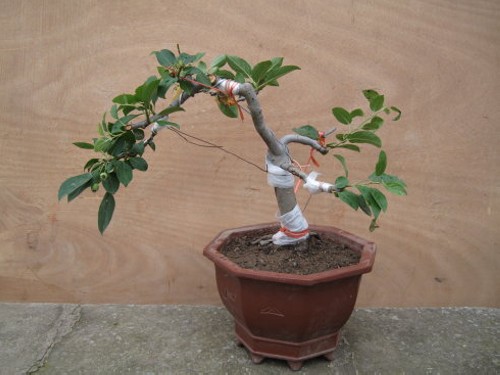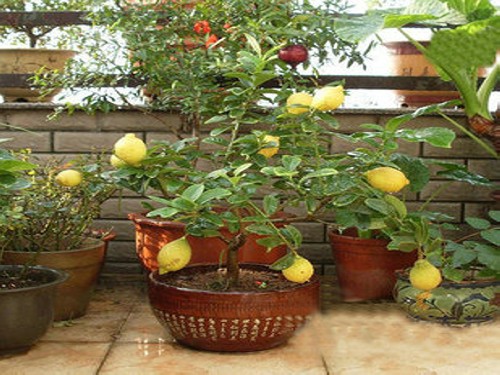How to maintain the bonsai of hammer elm
The dried elm is slightly curved, the bark is mottled and elegant, the twigs are graceful, and the autumn leaves turn red. It is a good ornamental tree and factory greening, greening tree species on all sides, often planted alone into a scene, suitable for planting near the pond and pavilions, but also between mountains and rocks, but there are more diseases and insect pests. It has strong sprouting power and is a good material for making bonsai. The tree has the advantages of beautiful shape, chic posture, mottled bark and fine branches and leaves, which has high ornamental value. It is suitable to plant alone, in clusters or with pavilions in the garden, and it has a good ornamental effect as shade trees, street trees or bonsai.
Many bonsai friends buy bonsai, but do not know how to raise bonsai, although nut elm bonsai is easy to raise, but the survival rate of its downhill pile is not high, especially in the balcony maintenance, some flower friends according to their own years of experience, summed up some key points of the conservation of nut elm bonsai, hoping to help flower friends.

How to raise the bonsai of hammer elm?
1. The selection of piles should be strict, and the blanks must be fresh, decayed, rootless, select as much as possible, and do not pursue more, so as to ensure that all the selected billets can survive.
2. The pre-planting treatment of Ulmus pumila is very important, especially to take good care of its wound and cross-section, because it is easy to run a large amount of pulp in the presence of water. Therefore, after the pile blank is trimmed, the section and its wound must be trimmed and smooth, and the large section had better be trimmed into a 45-degree slope of leather and xylem. This can not only prevent bacterial infection, but also help the wound heal as soon as possible and take root as soon as possible.
3. After the wound has been treated, it can not be put on the basin immediately. It should be placed in the shade to dry for a few hours, so that the wound can naturally collect water and form a protective film, which can greatly reduce the occurrence of juice flow after the pile billet is put on the basin. The biggest disadvantage of all elm varieties is that it is easy to flow juice and run pulp. If the hammer elm pile is broken before and after planting, it is difficult to overcome this disadvantage effectively, then it is difficult to ensure the survival of the pile.
4. Some hammer-elm piles have many holes in the upper face, and many holes are filled with deciduous soil and weeds, which must be thoroughly removed. The reason is that these sundries more or less contain ant colonies or insect eggs, if they are not cleaned up before potting, the weather gets warmer in the future, the activity of ant colonies and insect eggs in the cave increases, reproduction increases, it is difficult to cure, and the harm is endless. In the end, the pile may be eaten and killed.
Hammer elm likes to be dry and afraid of dampness, so it should be planted in earthen pots. The soil had better be made of yellow sand, pine needle soil and loess in the proportion of 4:3:3. This kind of soil is both breathable and water-retaining, and does not accumulate water. Several layers of tiles are padded to the bottom of the basin, and then a layer of coarse sand is padded to the bottom of the basin. After the soil is good, it is shaken a few times, and then compacted downward along the edge of the basin to prevent the formation of voids under the pile root and affect the hairy root. After pouring the fixed root water thoroughly, cover it with a plastic bag and put it in a relatively fixed place. Do not move it often, so as not to touch the pile root and break the root bud. Try to control watering, spray more water on the branches, and the basin soil had better be kept dry. Do not rush to fertilize after the survival of the new pile, which is an important reason for the failure of many people to raise billet, which should be applied again after autumn.
Maintenance method of elm bonsai
1. Placement
Hammer and elm should be placed in a place with plenty of sunshine and good ventilation. There is no need for shade in summer and can be placed outdoors in winter. In order to prevent the basin soil from drying and freezing, the basin can be buried in the soil.
2. Watering
Hammer elm like to be moist, watering should be adequate, summer temperature and high light intensity, water once in the morning and evening, but do not make the basin stagnant water. It can be watered less in autumn, but it is not necessary to be watered in winter, such as buried in basin soil.
3. Fertilization
Barnyard manure or cake manure is used as base fertilizer in winter, and thin organic fertilizer can be applied every half a month from April to October (except Meiyu season) to maintain the need of normal growth nutrients. Nitrogen and potash are the main fertilizers.
4. Pruning
The branches and leaves of Ulmus pumila grow fast, so it is appropriate to prune regularly in order to maintain the bonsai model. generally, when the new bud branch extends to 5 cm, only 2 leaves remain, and the rest are cut off. In order to control growth, buds can be removed at any time.
5. Turn the basin
It is carried out every 2-3 years, and the best time is before sprouting in spring, or in autumn. When turning the basin, the old soil can be removed, and some of the old roots can be cut off to cultivate the soil with rich and loose soil.
6. Pest control
There are many insect pests in elm, such as elm leaf golden flower beetle, shell beetle, longicorn beetle, diamondback moth and coir moth. It can be sprayed with 1500 times of dichlorvos, longicorn beetles harm tree trunks, and stone-sulfur mixture can be used to block wormholes.
Time: 2019-05-31 Click:
- Prev

What if the bonsai leaves of winter red fruit turn yellow? How to raise winter red fruit?
The winter red fruit is easy to bloom, the fruit setting rate is high, the fruit is all red, and the hanging fruit period can be extended to the flowering and long leaves of the following year without falling off. it is an excellent variety of bonsai and is deeply loved by the people. However, in the process of cultivation, the leaves are often yellowed and shedding due to the limitation of basin capacity and other effects.
- Next

How to cultivate potted lemons-cultivation methods of potted lemon trees
Planting some plants at home not only beautifies the environment, but also brings people a very pleasant mood. Watering flowers and plants every day is a kind of enjoyment. Recently, there are more and more potted plants at home, nearly 20 pots, and the long row on the balcony is a beautiful scenery.
Related
- Fuxing push coffee new agricultural production and marketing class: lack of small-scale processing plants
- Jujube rice field leisure farm deep ploughing Yilan for five years to create a space for organic food and play
- Nongyu Farm-A trial of organic papaya for brave women with advanced technology
- Four points for attention in the prevention and control of diseases and insect pests of edible fungi
- How to add nutrient solution to Edible Fungi
- Is there any good way to control edible fungus mites?
- Open Inoculation Technology of Edible Fungi
- Is there any clever way to use fertilizer for edible fungus in winter?
- What agents are used to kill the pathogens of edible fungi in the mushroom shed?
- Rapid drying of Edible Fungi

